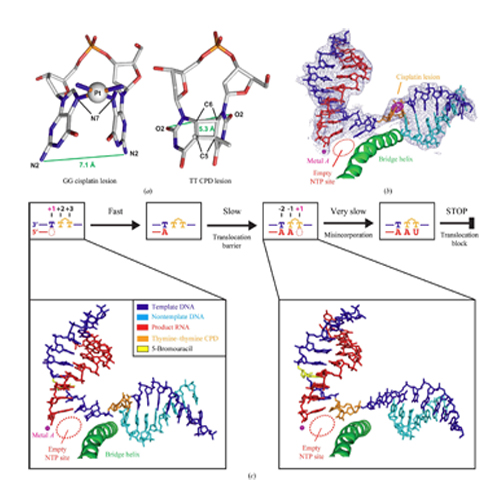Structure–function studies of the RNA polymerase II elongation complex
01-Feb-2009
Acta Chrystallogr. D, 2009, 65(2), 112-120, doi:10.1107/S0907444908039875 published on 01.02.2009
Acta Chrystallogr. D, online article
RNA polymerase II (Pol II) is the eukaryotic enzyme that is responsible for transcribing all protein-coding genes into messenger RNA (mRNA). The mRNA-transcription cycle can be divided into three stages: initiation, elongation and termination. During elongation, Pol II moves along a DNA template and synthesizes a complementary RNA chain in a processive manner. X-ray structural analysis has proved to be a potent tool for elucidating the mechanism of Pol II elongation. Crystallographic snapshots of different functional states of the Pol II elongation complex (EC) have elucidated mechanistic details of nucleotide addition and Pol II translocation. Further structural studies in combination with in vitro transcription experiments led to a mechanistic understanding of various additional features of the EC, including its inhibition by the fungal toxin α-amanitin, the tunability of the active site by the elongation factor TFIIS, the recognition of DNA lesions and the use of RNA as a template.











